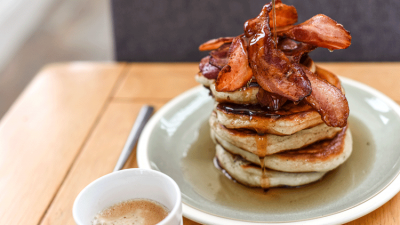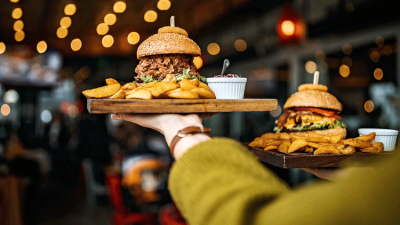What the new Calorie Labelling Regulations mean for your business

Ask any hospitality operator what their wish for the new year is and you can be confident the answer will not be additional red tape. But unfortunately, there is going to be plenty of it to contend with as we head into 2022, not least in the form of the Calorie Labelling Regulations.
The new legislation essentially means that businesses of a certain size and type will be legally required to show the energy content on menus, menu boards and online. It forms part of a public health drive, targeting restaurant and takeaway meals, which are generally considered to have more calories than equivalent retailer own-brand or manufacturer-branded products.
This new legislation does not come into force until 6 April, however, business owners would be wise to get ahead of the game by familiarising themselves with what to expect. With that in mind, here are some answers to key questions about the Calorie Labelling Regulations.
What will the law require hospitality businesses to do?
In short, provide calorie information about the food on sale at your venues to help customers make healthier choices. More specifically, the law requires cafés, restaurants, pubs and takeaways to provide the energy content in kilocalories (kcal) of most of the food and drink that they sell for immediate consumption. You also need to indicate the size of a single portion or, if provided for consumption by more than one person, the number of people served. And you must be sure to display the prescribed ‘intake statement’ “adults need around 2,000 kcal a day” on each page of the menu.
Does it apply to every restaurant business?
The law is aimed squarely at chains rather than independents. It applies to businesses (most businesses) with 250 employees or more, including caterers, franchisees and food delivery companies.
Where are businesses required to display the information?
The calorie and portion size information must be displayed at ‘the point of choice for the customer’, i.e on menus, menu boards and online or, where food is chosen from items on display, ‘on a label identifying the food concerned’. All of the information needs to be ‘easily visible’, ‘clearly legible’ and ‘not hidden or obscured’, and preferably in a font and format that is as prominent as the dish name or price. Where food is offered by distance selling, such as by phone or online and including third-party delivery apps, calorie information for each item must be made available to the customer both when the food is ordered and when it is delivered. This will no doubt require coordination, and probably additional data exchange, with delivery partners as well as new processes in store.
Does this apply to all food that restaurants sell?
There are exemptions. For example, condiments added by the customer, items on the menu for less than 30 days, and food that is requested by a customer but that isn’t listed on your menu. There is an additional challenge if a restaurant offers a lot of potential combinations from which the customer can select, such as ‘build your own’, coffee menu boards or meal deals. The Department for Health and Social Care implementation guidance appears to be more demanding than the previous voluntary scheme, which allowed for a ‘default option’, reiterating that businesses must ensure that they display the information as required under the regulations for each option and choice.
Does the law apply to alcohol?
The law does not require calories to be listed for any alcoholic drinks with an abv greater than 1.2%.
How do businesses work out the calorie information?
The implementation guidance states that operators should continue to follow the three existing legally accepted ways of obtaining nutrition information:
• The manufacturer’s analysis of the food
• A calculation from the known or average values of the ingredients used
• A calculation from generally established and accepted data
Fourth’s solution will feature calories per 100g, either imported from an external standards body (such as McCance & Widowson in the UK) or provided by suppliers, for every bought-in ingredient, along with calories per serving, calculated by Fourth according to defined business rules and customer-provided details.
What happens if businesses don’t comply?
There are potentially stiff penalties for businesses that are found in breach of the regulations. Trading Standards officers will have the power to impose an ‘improvement notice’, basically a two-week period for venues to up their game. Failing that, businesses face fines of up to £2,500 or even criminal proceedings. As such, companies have no real choice but to comply, with the choice really being passed on to the consumer so they can make more informed, health-based decisions about what they want to eat.
What else should businesses be thinking about now?
As soon as possible, and definitely before the legislation comes into force this April, operators should be asking themselves, and their suppliers and partners, the following questions:
• If you already have supplier-provided calorific values for a given ingredient, are they still accurate – has the supplier provided correct data, and how recently?
• Which recipes and locations does this requirement apply to in your business and are any of your venues exempt?
• How will you manage the ongoing maintenance of recipe data such as ingredient quantities, yields, portion sizes for the affected recipes? Is all the data you hold for your recipes correct and how do you keep it valid?
• How will you manage appropriate printing, labelling and display of the energy content, serving size and intake statement on PPDS packaging, menus, menu boards and websites?
• If you use delivery partners, how will you ensure they get the data they need to present the energy content at the point of order? What new processes might you or they require to also make sure the information is available when the food is delivered to the customer?
Michael Hordern is senior product manager at Fourth




















